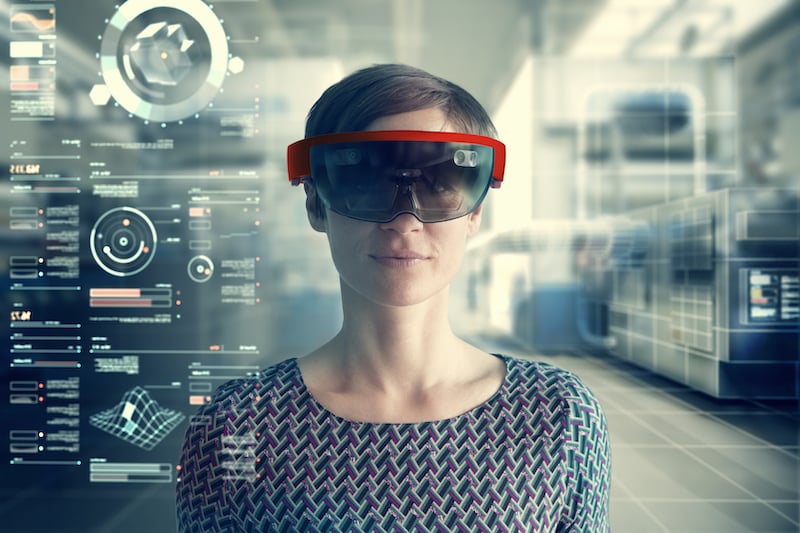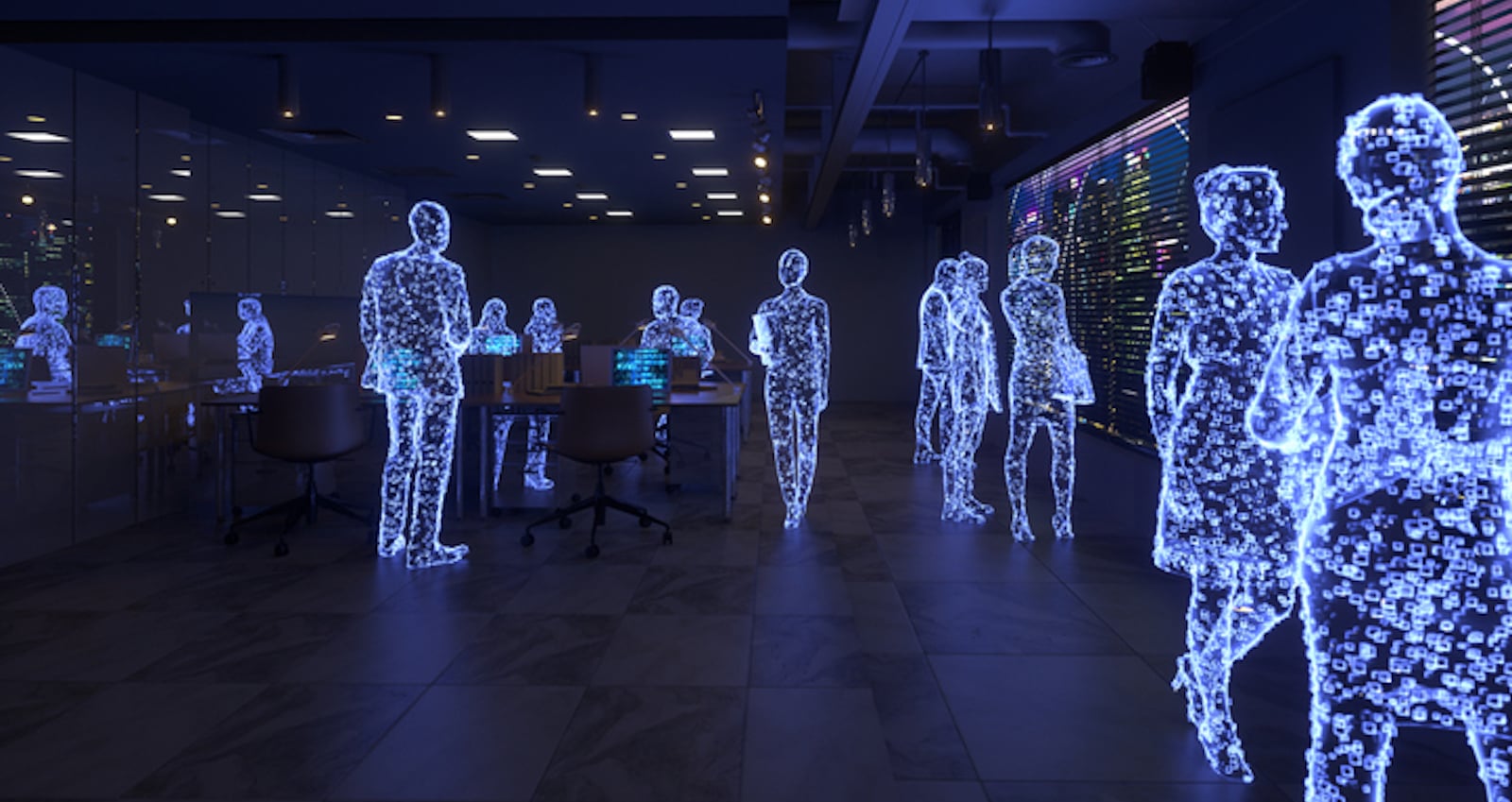Thursday, September 8, 2022
The future is no longer even today; it is now. The metaverse opens up enormous possibilities. From purchasing goods without being physically present, to teaching countless disciplines. But what will happen in energy?
Miguel Ángel González Doval, Chief Digital Officer Mobility & New Commerce Mobility at Cepsa
Technology is a promise of change, and the metaverse is one of those most talked about in recent months. It is easy to hear about it in countless sectors. Even transformed to fit each reality. Automakers are already investing in the concept of metamobility. The idea is to create physical elements interconnected with virtual elements that change the way we understand mobility and even how means of transportation are manufactured.
But the metaverse is not a revolution. It has been present in the industry for years. Many will remember Second Life. A virtual space where your avatar could interact with other people in virtual environments. This was in 2003. At that time, the famous "cloud" did not exist. It would arrive between 2006 and 2007. And the Google search engine was a tool that barely resembles what we know today. In 2003, there were 55 billion searches. Today, they reach that figure in one week. And countless games —such as the successful Fortnite — exploit similar technology. There is a succession of avatars that the player is able to customize (for a fee). Undoubtedly, much of the technology is already "here". Zooming —so often used since the pandemic— is also metaverse. Who has not attended a virtual meeting? The big change perhaps lies in its future applications in a world as disruptive and challenging as the one proposed at the beginning of this century.
The real potential of the metaverse has yet to be realized. We know that it has a great impact on business-to-business relations.
The real potential of the metaverse has yet to be realized. We know that it has a great impact on business-to-business relations. Virtual meetings (Microsoft wants to add the capabilities of Teams to the digital space), product presentations, product sales. Any activity that one could imagine in physical space has its possible replica in this intangible environment.
All of this is moving from fiction to science thanks to the exponential growth of technology. The future is no longer even today; it is now. The metaverse opens up enormous possibilities. From purchasing goods, we have seen, without being physically present, to teaching countless disciplines. Stores and desks are going virtual. It is also an instrument for combating inequality. Because it is possible, for example, to access higher education at a lower price (digital training usually has a lower cost than face-to-face) and even to acquire luxury goods, which, while maintaining their principle of exclusivity, decrease in value because they do not require a physical store or employees. Consumption and training. And what will happen in energy?
The metaverse in energy
Energy savings support the metaverse. Think, for example, of a wind turbine farm and the rhythmic movement of its blades in the wind. Learning how to run a wind power plant is complex. This technology can be that virtual blackboard. It is capable of simulating all kinds of situations in which both the park and the operator could be involved. Open up a roadmap for workers to know how to manage the turbines. Simulation reproduces the sensation of being in high, enclosed spaces. And any failure to learn has no real consequences. The savings in time, cost, and risk are obvious. Of course, there is no one, "closed" metaverse. It is a constant test-run. Let's imagine, for a moment, transportation.
A road that leads to the beginning of our narrative: metamobility. Its technologies will change the transportation system as we know it today. They will range from the autonomous car to the remote control of robots in smart factories. Human beings will have succeeded in building a bridge between the physical world and the new digital reality. Although it seems far away, in that instant, however, space, time and distances will become unimportant. Maybe it's going too fast. Perhaps we should start more slowly. Because of one question. How can this visionary technology help save energy in transportation? Let's look at automatic driving. Vehicles can be "trained" in the metaverse so that their movements are precise, they know how to choose the best routes, and this increases the safety of the journeys. The basis is its enormous capacity to analyze huge volumes of data. An identical reasoning powers vehicle fleets, traffic management, and the entire ecosystem of the collaborative economy, such as car sharing. It is a rule of proportions: the better "trained" they are, the less greenhouse gases they will emit.

Technology is testing its possibilities. We are still far from the proposal made by the creators of this space, which ranges from work to leisure. For example, designing a virtual place (using augmented reality glasses) where users can perform almost any activity. Going to the movies, working, playing sports, enjoying concerts, driving. We are talking about bringing the cost of travel to zero. In other words, replacing physical mobility with virtual mobility through applications with a realism that may not be very faithful now but whose quality will improve. Until the two "realities" are difficult to distinguish. Looking at the numbers, the investment bank JP Morgan foresees the possibility of generating one trillion dollars in revenue per year, adding together all sectors of economic activity.
The investment bank JP Morgan foresees the possibility of generating one trillion dollars in revenue per year, adding together all sectors of economic activity.
This new horizon would have been a chimera without the advances in virtual reality, artificial intelligence, the Internet of Things, 5G, or blockchain. Another area in which the metaverse could foster an intense discussion is in distributed generation. It will predict what the energy flow in our homes will be like. And when, in addition to solar panels, we have an ecosystem of devices that can interact with the power grid, it will help manage energy costs by optimizing supply and adjusting generation.
“Virtual twins” and the decarbonization of technology companies
The ecosystem is set up. What other applications does it entail in terms of energy? The metaverse—we have seen— is not a source of energy generation but of savings. That is its great center of gravity.
Again, questions. If we want to fulfill all these "promises", the computational capacity required to build this virtual environment is enormous. And its energy consumption. Logic takes us to a more efficient world. For all these savings to be sustainable, the energy that powers these big computers and huge data centers must also be green. They must be decarbonized.
The major technology companies have taken up the challenge. They have announced their plans for reaching net-zero emissions. Amazon has set that date at 2040. Although five years ahead of schedule, by 2025, all of the energy used by the company will come from renewable sources. Another giant, Google, will reach those emissions by 2030. And Meta (formerly Facebook) has set the same date as the search engine. Because some activities have very high energy costs. Only 25% of the energy used to "mine" bitcoins comes from renewable sources.
Perhaps where these “twins” (their market will grow to 82.3 billion euros by 2025) will have the greatest influence in terms of sustainability is in cities.
It is the search for a meeting point. The convergence in the metaverse of artificial intelligence, augmented reality, the Internet of Things, and satellite-generated data adds up to a promise that brings with it the rise of virtual twins. These are the digital representation of a physical object or system that is updated using real-time data. Virtual representations of processes and items in the tangible world can contribute to the sustainability of the planet. From supply chains to parts manufacturing. But perhaps where these twins (the market for them will grow to €82.3 billion by 2025) will have the greatest influence in terms of sustainability is in cities, which are responsible for 70% of CO2 emissions. According to the consulting firm EY, the use of this technology can reduce emissions by 50%, increase operational efficiency by 35%, and increase employee productivity by 20%.
And we must not forget the times that we are living in. The complicated geopolitical situation of the planet can produce two movements: accelerate green change even more or hinder its implementation. Although the need for the transformation is not even questionable. The difference will be in the speed. It is still too early to know how to reorder a world that is slowing down –if not reversing– its globalization. The return of supply chains, or at least their closer proximity to the producing nations, is a prevailing logic. Energy security is a term that is being revived, after a certain, and unfair, neglect. No one wants to depend on a nation or nations thousands of miles away from their markets, living in an instability, in many cases, alien to the basic rules of coexistence between countries.
Virtual mobility, based on metaverse technologies, brings great potential for reducing greenhouse gas emissions. However, all energy resources must be taken into account. A narrow technological approach, which does not count on them in this transitional space, will lead to failure and disappointment. Human beings need time and options to change an industrial model that has been regulating the world for more than a century and a half. We are walking the green path. The metaverse is one step.
¿Te ha parecido interesante?





